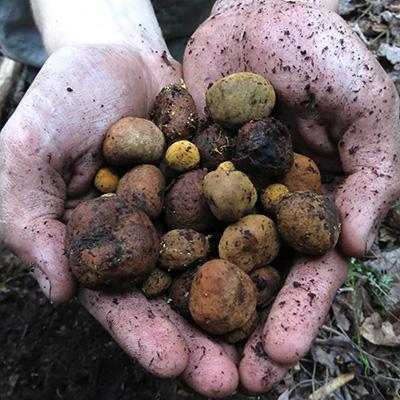Incorporating Belowground Competition for Nitrogen into Quantitative Models to Predict Ecosystem Productivity and Carbon Storage

The composition of forest tree species, and the availability of growth-limiting resources (light, nutrients, water), strongly influence how trees allocate carbon acquired through photosynthesis to different components of their growth. Trees allocate carbon aboveground to woody tissue and leaves, and belowground to fine roots and mycorrhizal (root-associated) fungi. Nearly all temperate and boreal forest trees have symbiotic associations with mycorrhizal fungi, which provide trees with soil nutrients for growth and receive photosynthetically-fixed carbon from their tree hosts in return. Despite their well-known importance, most carbon allocation studies fail to include mycorrhizal fungi.
NSRC researchers quantified carbon allocation to aboveground wood and foliar production, and belowground production of fine roots and mycorrhizal fungi, across temperate forest stands spanning a range of nitrogen availability and species composition on the Bartlett Experimental Forest in New Hampshire. As the proportion of conifers increased and the availability of soil nitrogen decreased, the production of plant components (foliage, aboveground wood, fine roots) decreased by nearly 100%, while the carbon allocated to mycorrhizal fungi increased by more than 100%.
Estimates of carbon allocation to mycorrhizal fungi are important for gaining a more complete understanding of how northeastern forests respond to changes in growth-limiting resources, climate, and land management. A better understanding of the tradeoffs between the production of plant and fungal components that changes with tree species and nutrient availability will help predict that magnitude of ecosystem services (e.g., timber production) provided by the Northern Forest. Project data will help to modify an existing ecosystem model to include mycorrhizal fungi.
